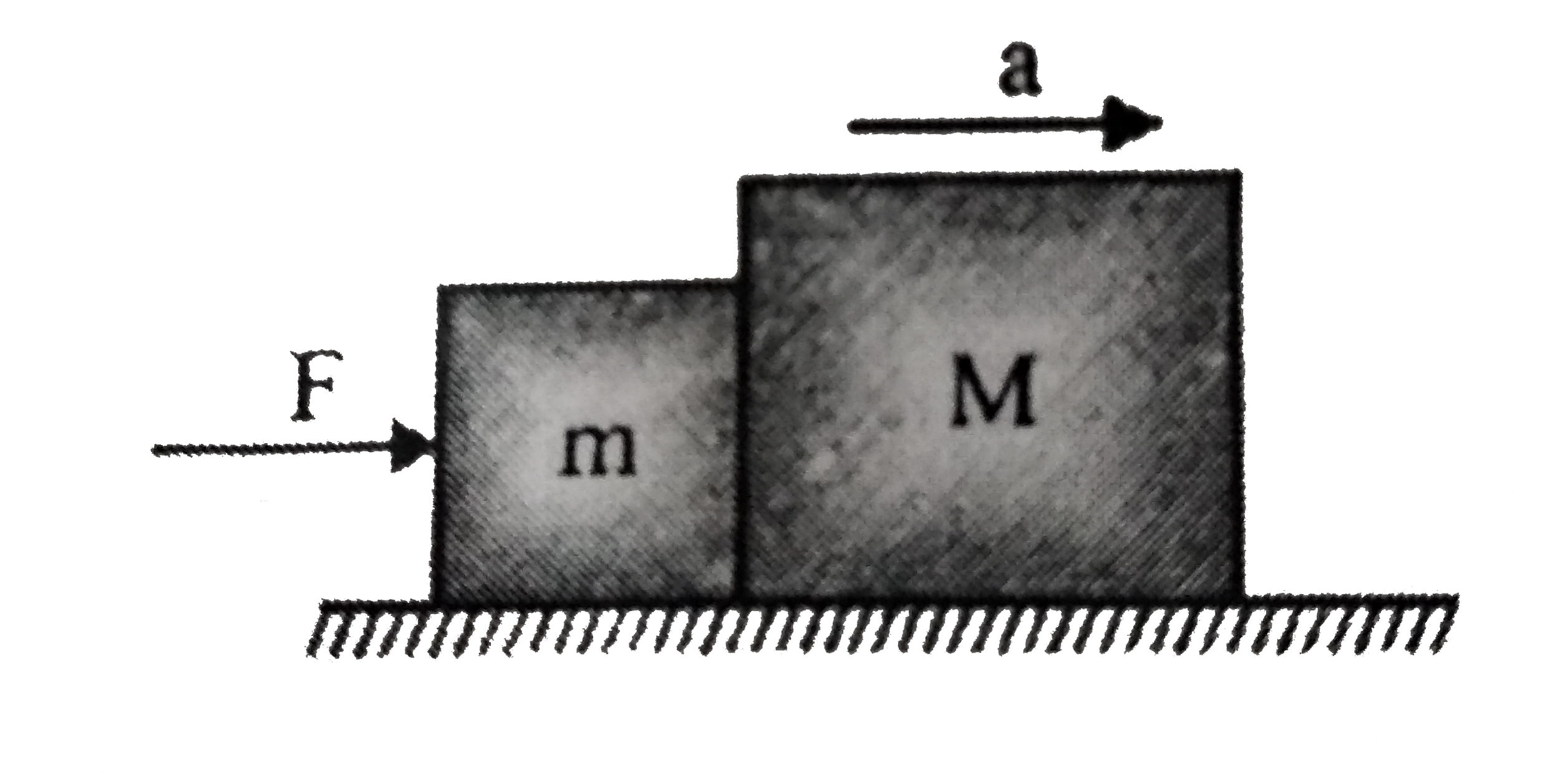A dynomometer D (a force meter ) is attached to two masses M = 10 kg and m = 1 kg . Force F = 2 kg f and f = 1 kgf are applied to the masses . What will applied to the masses . What will the dynamometer show if :
(a) F is applied to M and f ot m
(b) F is applied to m and f to M
(c) if M = m = 5 kg .

In all the cases as net pulling force is F−f while the mass involved is m+M
Acceleration (a) forcemass=F−fm+M=1ms2 ...(i)
So, the whole system will move in the direction of larger force with acceleration given by Eqn.(i)
(a) if T1 is the reading of dynamometer then for motion of M and m respectively we have
F−T1=MaandT1−f=ma
i.e., T1=F−MaandT1=f+ma
Substituting a from Eqn. (i) in any of the above, we get
T1=mF+Mfm+M≅f=10N ...(ii)
(b) For this case, equations of motion for m and M will be respectively
F−T2=maandT2−f=Ma
Either of these equations in the light of Eqn. (i) yields
T2=MF+mfm+M≅F=20N ....(iii)
(c) Substituting m=M in Eqn. (ii) or (iii) we get
T3=F+f2=20+102=15N
The tension in the spring is independent of mass in this case.
Note: if f=F,a=0andT=F=f
i.e., if two equal forces are applied to two differencet masses connected by a spring the system remains at rest and the tension in the spring is equal to either force. The stretch in the spring will be (F/k) as F=ky.
Topper's Solved these Questions
- FORCE AND NEWTONS LAWS OF MOTIONBook:GRB PUBLICATIONChapter:FORCE AND NEWTONS LAWS OF MOTIONExercise:Problem for practice
Explore 30 Videos
- FORCE AND NEWTONS LAWS OF MOTIONBook:GRB PUBLICATIONChapter:FORCE AND NEWTONS LAWS OF MOTIONExercise:Objective Questions
Explore 134 Videos
- FORCE AND NEWTONS LAWS OF MOTIONBook:GRB PUBLICATIONChapter:FORCE AND NEWTONS LAWS OF MOTIONExercise:Comprehension
Explore 12 Videos
- BASIC MATHEMATICSBook:GRB PUBLICATIONChapter:BASIC MATHEMATICSExercise:Problems For Practice
Explore 35 Videos
- FRICTION AND CIRCULAR MOTION Book:GRB PUBLICATIONChapter:FRICTION AND CIRCULAR MOTION Exercise:Comprehension type
Explore 11 Videos
Similar Questions
In the figure at the free end a force F is applied to keep the suspended mass of 8 kg at rest. The value of F is :

View SolutionTwo blocks of mass m=1 kg and M=2 kg are in contact on a frictionless table. A horizontal force F(=3N) is applied to m. Find the force of contact between the blocks. Will the force of contact remain same if F is applied to M?

View Solution
Knowledge Check
A dynamometer D is attached to two bodies of masses M=6 kg and m=4 kg. Force F=20 N and f=10N are applied to the masses as shown. The dynometer reads
 A10NB20NC6 ND14 N
A10NB20NC6 ND14 NA dynamometer D is attached to two blocks of masses 6kg and 4kg.Forces of 20N and 10N are applied on the blocks as shown in Fig. The dynamometer reads
 A10NB20NC6ND14N
A10NB20NC6ND14NA dynamometer D, which is a device used to measure force, is attached to two blocks of masses 6 kg and 4 kg. Forces of 20 N and 10 N are applied on the blocks as shown in the figure. The reading of the dynamometer is
 A10 NB20 NC6 ND14 N
A10 NB20 NC6 ND14 N
Two blocks of mass = 2 kg and M = 5 kg are in contact on a frictionless table. A horizonatal force F (= 35 N) is applies to m. Find the force of contact between the block, will the force of contact remain same if F is applied to M ?

View SolutionWhat force F must be applied so that m1 and m2 are at rest on m3 in
View SolutionTwo blocks of mass m = 1 kg and M = 2 kg are in contact on a frictionless table. A horizontal force F(= 3N) is applied to m. The force of contact between the blocks, will be-
View SolutionIn the figure at the free end a force F is applied to keep the suspended mass of 18 kg at rest. The value of F is-

View SolutionThe mass m is placed on a body of mass M. There is no friction. The force F is applied on M on it moves with acceleration a. Then, the force on the top body is

View Solution

